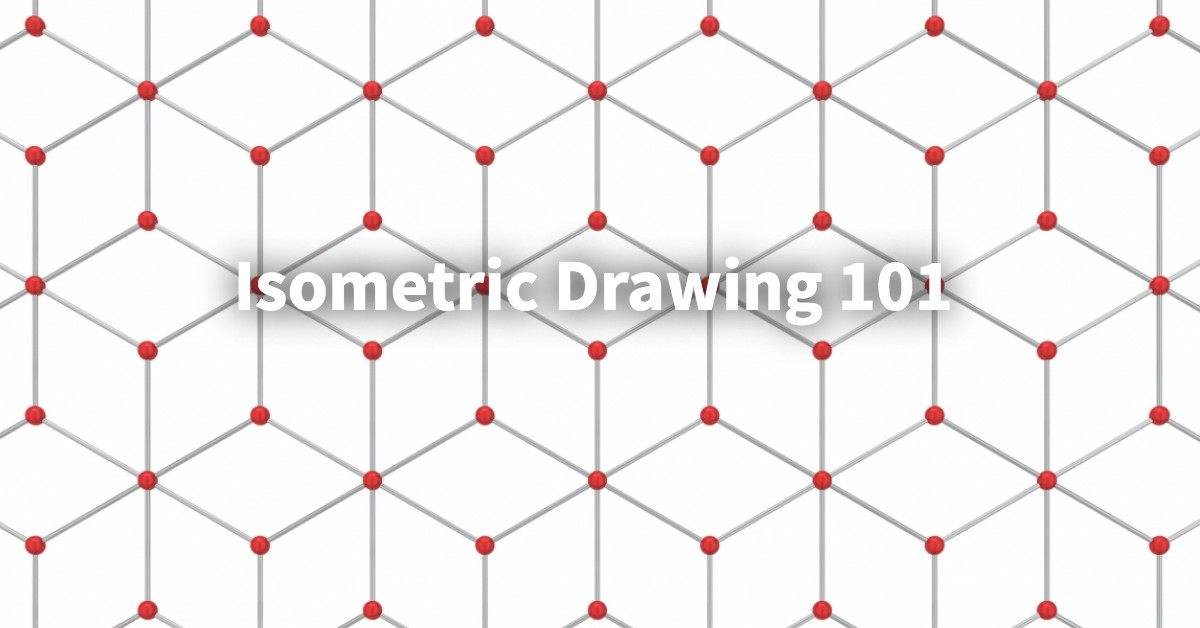Rush Service Available for Unbeatable Turnaround Times
*20% Rush Service Fee
Professional Drafting & Design Services

Isometric Drawing 101
Isometric drawings have long been a cornerstone of the drafting world, due to their versatility, their clarity, and their preservation of scale. At DrafterMax, we can pair isometric drawings and 3D renderings with plan, elevation, and detail drawings to better display the dimensionality of an object or building, without losing measurable, scaled information. So, what exactly are these drawings? Why do we use them? And what are some of the setbacks of isometric drawings? Let’s address these questions to gain a better understanding of this style of drafting.
What are isometric drawings?
Isometric drawings are simply a to-scale projection of a three-dimensional object on a two-dimensional surface (e.g. paper or your computer screen). In this way, a three-dimensional cube can be rendered on a two-dimensional surface, while still looking three-dimensional (although distorted — more about why this view looks distorted later).
Isometric drawings are used in all sorts of design, engineering, and architectural fields to render buildings, components, and even furniture (among many other design objects). Isometric drawing is one of the most common forms of rendering thanks to its preservation of scale and easily understood representation of space. Let’s dig into some further benefits of isometric renderings…
The Benefits of Isometric Drawings
As we mentioned, isometric drawings are visually appealing, they maintain scaled measurements, and they help to represent multiple angles of a project at once.
Visual Appeal
For pitches and big-picture uses, isometric drawings may prove to be the most effective type of rendering. Let’s take a rendering of a home, for example. While a rendering of an elevation of the home may be sufficient to explain where the doors and windows are placed, it is lacking in showing the overall size and general look of the building. Similarly, a floorplan will show the square footage of a home, but it won’t describe how that space looks or how it may feel to occupy that space. For this reason, plans and elevations are often paired with isometric or perspective drawings to better describe the space by providing an added dimension.
Scale Maintained
Unlike perspective drawings (which show how a building or object will look in the eyes of an onlooker), isometric drawings perfectly preserve scale. Each dimension rendered on an isometric scale represents measurable lengths, so these drawings may be utilized for dimensional purposes in manufacturing, assembly, and communication purposes. And unlike plan and elevation drawings, we glean information about multiple dimensions of a project. Isometric drawings are unique, in that their three axes (which may be labeled x, y, and z) are separated by exactly 120 degrees in a two-dimensional rendering, which enables complete preservation of scale for all objects rendered in this view.
Clear Representation of a Project as a Whole
Since isometric drawings show three dimensions (versus the two that you would find in a plan or elevation drawing), the rendering will be more legible as a 3D object. A building will look like a building instead of just a facade. And a cube will look like a cube instead of a square. Isometric drawings may be ideal to show to clients when trying to win a bid or project, since they are clear and visually appealing.
The Drawbacks of Isometric Drawings
While isometric drawings are preferable for many projects, there are still some faults in this drawing style, which is why isometrics are often paired with elevation drawings, plans, details, and other rendering methods. We’ve outlined a few of those drawbacks:
Distorted Perspective
If you think that an isometric drawing just doesn’t look right, it’s because it’s not rendered in true perspective. Ideally speaking, a rendering would show that objects are smaller when they’re farther away — after all, that’s how our eyes perceive the world. Think about a railroad track, do the rails grow smaller as they recede into the distance? Do the rails seem to meet as they approach a point on the horizon? This is called perspective, and isometric drawings fly in the face of how we normally perceive three dimensions, which is why these drawings, though rendered to-scale, look warped.
Oftentimes, architects opt to render perspective drawings in lieu of scaled isometric renderings when they’re giving a pitch to a prospective client. Why? Perspective drawings simply look more real, more experiential, and more momentous. On the other hand, isometric drawings look stagnant and a bit odd to those who aren’t accustomed to the rendering style.
Complexity
In highly complex projects, isometric drawings may prove to be a muddled composition, and that may actually make it more difficult to understand the information at hand, even though they’re to-scale. Consider a set of spiral stairs, for example. In an isometric drawing, the dimension of each stair is preserved, but the drawing would be clouded with numbers if each length was included in the drawing. Instead, it’d likely be best to show a plan drawing of the dimensions of each step in the spiral staircase, as well as plan drawings to show the hardware and installation instructions for each piece supporting the stairs overhead.
Hidden Components
It’s difficult, if not impossible to include all of the details necessary to fully understand a designed object, and isometric drawings are no exception to that rule. In an isometric drawing, you’ll be able to see surfaces that are rendered to be closest to the viewer. However, these rendered surfaces will hide any surface behind them, which means that we would be able to see the top, front corner of a cube rendered isometrically, yet the back lower corner would be completely obscured. For this reason, multiple rendering styles or multiple isometric drawings may be necessary to portray all of the information relevant to a project.
Count on DrafterMax for Isometrics and Other Renderings
Here at DrafterMax, we have the drafting skill that you need to complete your most demanding projects. Architectural firms, engineers, furniture designers, and the like all depend on us for their drafting needs. If you need to outsource some or all of the drafting necessary for a project, you can count on our Brooklyn-based drafting firm. Give us a call to get started!
DrafterMax Articles
Why You Need Comprehensive Building Drawings for Your Renovation
When planning building or apartment renovations, having comprehensive building drawings is crucial for a successful project. At Draftermax in New York, our team of expert engineering and architectural drafters understand…
Read MoreADA Compliance in Architectural Design
At Draftermax, we firmly believe that architectural design should be a bridge to inclusivity and accessibility. It’s not just about creating visually stunning structures; it’s about making spaces that embrace…
Read MoreThe Future of Architectural Drafting: Trends to Watch
As a leading architectural CAD drafting firm, Draftermax is always at the forefront of industry advancements. The world of architectural drafting is constantly evolving, driven by technology, sustainability, and changing…
Read More




